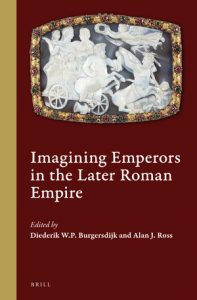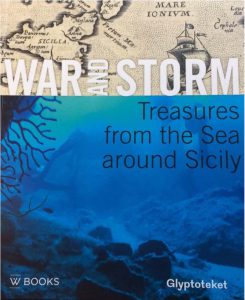English publication
Publication Types:


Sicily. Island of myths and monsters, meeting place of cultures, hub of naval trade routes, source of artistic inspiration and of great material wealth, and much-coveted strategic location in the Mediterranean. Phoenician and Greek colonists were the first outsiders to settle on Sicily and enjoy the riches that the sea and the fertile soil brought them. They were followed by a bewildering variety of invaders over the ages: from Romans to Byzantines through Arabs and various European dynasties up to the Allies during the Second World War. All these cultures – sometimes living in peace, sometimes at war, always influencing each other – left their traces on the Island itself and in the sea surrounding it. Inspired by Sicily’s archaeological and cultural treasures, this book offers an overview – or perhaps rather an anthology, since a complete survey, if at all possible, would soon become stifling – of the island’s history and culture, paying attention not only to ancient and mediëval shipwrecks, battles, economy and art, but also to typically Sicilian traditions (from folk-tales and tuna fishing to mafia fighters), modern politics, and the poets, novelists and film makers who lived on Sicily or were inspired by its unique character.

Sicily. Island of myths and monsters, meeting place of cultures, hub of naval trade routes, source of artistic inspiration and of great material wealth, and much-coveted strategic location in the Mediterranean. Phoenician and Greek colonists were the first outsiders to settle on Sicily and enjoy the riches that the sea and the fertile soil brought them.
They were followed by a bewildering variety of invaders over the ages: from Romans and Byzantines through Arabs and various European dynasties up to the Allies during the Second World War. All these cultures – sometimes living in peace, sometimes at war, always influencing each other – left their traces on the island itself and in the sea surrounding it. Inspired by Sicily’s archaeological and cultural treasures, this book offers an overview – or perhaps rather an anthology, since a complete survey, if at all possible, would soon become stifling – of the island’s history and culture, paying attention not only to ancient and medieval shipwrecks, battles, economy and art, but also to typically Sicilian traditions (from folk-tales and tuna fishing to mafia fighters), modern politics, and the poets, novelists and film makers who lived on Sicily or were inspired by its unique character.

Diederik Burgersdijk analysed stylistic and structural aspects of the Historia Augusta, a late-ancient collection of Roman imperial biographies, in which the emperors reigning from Hadrian to Diocletian, 117-284 AD, are described. From his study significant differences are apparent between the different parts of the work, which points to the use of different source material and to a creation of the work in multiple editors. This is an important supplement to the revolutionary thesis of Dessau in 1889 that the Historia Augusta wasn’t written by six different authors, as the names of the authors who accompanied the books have suggested for centuries.

Emperors and Historiography. Collected Essays on the Literature of the Roman Empire by Daniël den Hengst
In this collection of essays Roman historical and biographical texts are studied from a literary point of view. The main interest of the author, Daniël den Hengst, professor emeritus of Latin at the University of Amsterdam, concerns the development of Roman historiography, the ways in which Roman historians present their work and the intertextual relations between these works and other literary genres. Special attention is given to the Historia Augusta and Ammianus Marcellinus, but also authors from the classical period, such as Cicero, Livy and Suetonius and their ideas about historiography are discussed. The articles demonstrate that a detailed interpretation of these texts in the original language is indispensable to understanding the aims and methods of ancient historians and biographers.
Introduced and edited by D.W.P. Burgersdijk and J.A. van Waarden.
